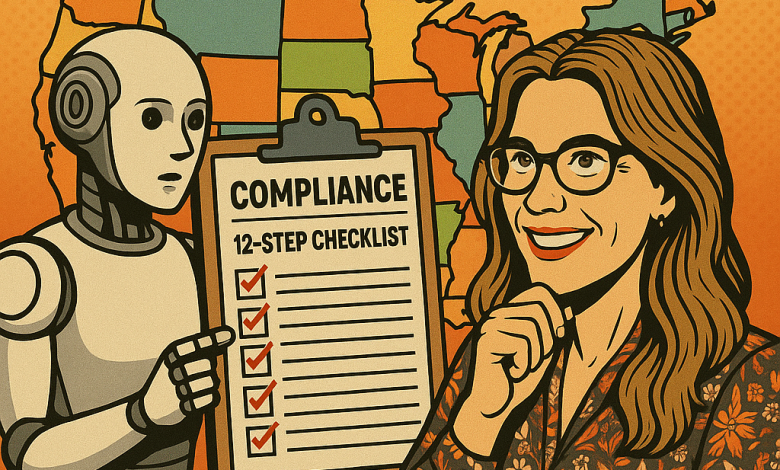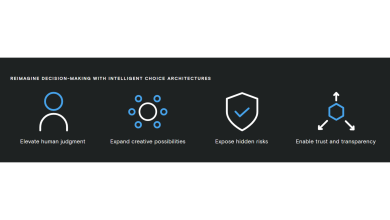
Artificial intelligence is evolving faster than regulators can keep pace. In the US, no federal law has yet set comprehensive rules for AI. Instead, some states are advancing their own frameworks. Examples include:
- Colorado: requiring impact assessments, notice/explanation, and a right to appeal with human review.
- California: focused on risk assessments, annual cybersecurity audits (not applicable to all entities), and consumer rights for access/opt-out related to The California Privacy Protection Agency’s Automated Decision-Making Technology (ADMT).
- Texas: Enacted the Artificial Intelligence Accountability and Transparency Act, which prohibits certain discriminatory and manipulative uses of AI in consumer and employment contexts.
Others are testing sector-specific laws or biometric restrictions. The result is a patchwork of obligations that shifts every few months.
For business leaders, this is more than a legal inconvenience. It threatens operational consistency, slows procurement cycles, complicates investor due diligence, and risks reputational damage when governance gaps are exposed.
There is, however, a smarter way to approach compliance: Build to a higher, unified standard, then adapt downward as needed. The European Union’s AI Act provides an apt blueprint for that approach. Its tiered, risk-based structure, rigorous documentation requirements, and meaningful human oversight obligations represent the highest regulatory bar currently on the books (phased obligations beginning in 2025–2026).
12-Point Checklist for Adopting AI Using “EU-Plus” Guidelines
By aligning to those standards now, U.S. enterprises can both mitigate risk and differentiate from competitors. Here’s a checklist to consider:
- Classify every AI system by risk. Adopt a simple taxonomy: unacceptable, high, limited, minimal. Map your US “consequential decision” systems –including education, employment, lending/credit, essential government services, health care, housing, insurance, and legal services– to the high-risk bucket by default. Document the rationale for each classification. Publish a one-page “risk card” for each system (specifying purpose, impacts, level, and owner).
- Build strong data lineage and provenance controls. Most regulatory concerns originate in the data itself. Require every team to document data sources, quality checks, bias testing, and retention/deletion policies. Automate lineage tracking where possible so you can answer, “What led to this decision?” without delay. Maintain a living data flow diagram tied to each model.
- Create model documentation everyone can read. Move beyond technical notes to developing a standard model profile that covers purpose, training data summary, known risks, limits, monitoring plan, and escalation paths. Use plain language that regulators, customers, and boards can all understand. Store profiles centrally with easy access for compliance teams.
- Keep sensitive processing in-platform. Each external API call represents a new risk. Prioritize architectures where sensitive data stays within your secured environment. Where third-party tools are unavoidable, contracts must explicitly prohibit training on your data and guarantee audit rights. Maintain a data flow inventory showing where data stays, where it travels, and why.
- Bake human oversight into workflows. Human review cannot be symbolic or perfunctory. Define specific triggers for when a person must review, approve, or override an AI output. Train designated personnel with authority and provide interfaces that surface the right signals. Establish a responsibility assignment matrix for oversight and design dashboards that enable intervention.
- Conduct pre-deployment impact assessments. Borrow the EU’s structured risk assessment model. For high-risk systems, run an AI Impact Assessment covering bias, security, societal harm, and mitigation plans. Update whenever the model or data changes. Require legal and compliance sign-off before launch.
- Standardize bias, accuracy, and robustness testing. Testing cannot be ad hoc. Build test suites by tiers, such as demographic performance checks, drift detection, red team attacks, misuse simulations. For high-risk systems, include stress scenarios and rollback thresholds. Attach evidence packs to release notes for every system.
- Control model updates like production code. Undocumented updates are compliance time bombs. Identify new models with version numbers, maintain release notes, and gate rollouts behind quality checks. Ensure you can prove when, why, and how a model changed. Extend your continuous integration/continuous delivery (CI/CD) pipeline to include governance checkpoints.
- Label AI clearly for users. Transparency is a recurring theme across both EU and US regimes. Disclose when users interact with AI, when content is AI-generated, and what appeal rights exist for consequential decisions. Don’t hide this in a policy; instead, place it in the workflow. Standardize disclosure copy and embed it directly in user interfaces.
- Turn procurement into a compliance gatekeeper. Third-party vendors are part of your risk surface. Update procurement checklists to demand risk classifications, model documentation, bias testing results, incident reporting, and contractual limits on data use. Refuse to accept vague assurances. Add an AI governance addendum to all vendor contracts.
- Monitor and close the loop. Governance does not end at deployment. Conduct regular monitoring for drift, anomalies, complaints, and bias re-emergence. Feed issues back into retraining and documentation. Create a production dashboard with leading indicators reviewed monthly.
- Anchor oversight at the board level. AI risk is business risk. Assign accountable executives across product, security, and compliance for each high-risk system. Deliver quarterly AI risk briefings to the board just as you do for cybersecurity. Create a standing board slide on AI governance posture.
Why “EU-Plus” Pays Off
Adopting an EU-level framework delivers benefits that extend well beyond compliance. First, it ensures procurement readiness. Large buyers and public agencies are already embedding EU style requirements into their RFPs, and vendors that cannot provide documentation around risk classification or oversight protocols are increasingly cut before contracts are even considered. Adoption also builds investor confidence. Private equity and venture firms now treat governance maturity as a key factor in due diligence, and companies that can demonstrate EU-level alignment send a strong signal of scalability and reduced regulatory risk.
Beyond that, an EU-plus approach creates operational consistency. Instead of scrambling to meet shifting rules in Colorado, California, or elsewhere, organizations can apply a unified baseline and adjust specific controls as necessary, without changing the philosophy behind them. Finally, adopting a mature framework strengthens market trust. Customers are beginning to evaluate governance alongside performance and cost, and enterprises that can demonstrate defensibility will consistently outcompete “black box” rivals in the marketplace.
Getting Started in 30 Days
A compliance overhaul doesn’t have to be overwhelming. In the first month, focus on the essentials. Start by identifying your five most consequential AI systems, drafting risk cards for each, and assigning clear ownership. Next, develop templates for model profiles and impact assessments, and pilot the process on one system to test for gaps.
In the third week, map sensitive data flows and update procurement policies to account for vendor risk. By week four, train oversight personnel and launch a lightweight monitoring dashboard to track system behavior. This 30-day sprint won’t deliver perfection, but it establishes visible momentum, produces reusable artifacts, and signals seriousness to regulators, customers, and investors alike.
The divergence between EU and US AI laws is not going away soon. But organizations don’t need to live with a fractured approach. By adopting the EU’s higher bar across operations now, US enterprises can simplify compliance, reduce risk, and demonstrate trustworthiness in an environment where trust is becoming the ultimate competitive advantage.



